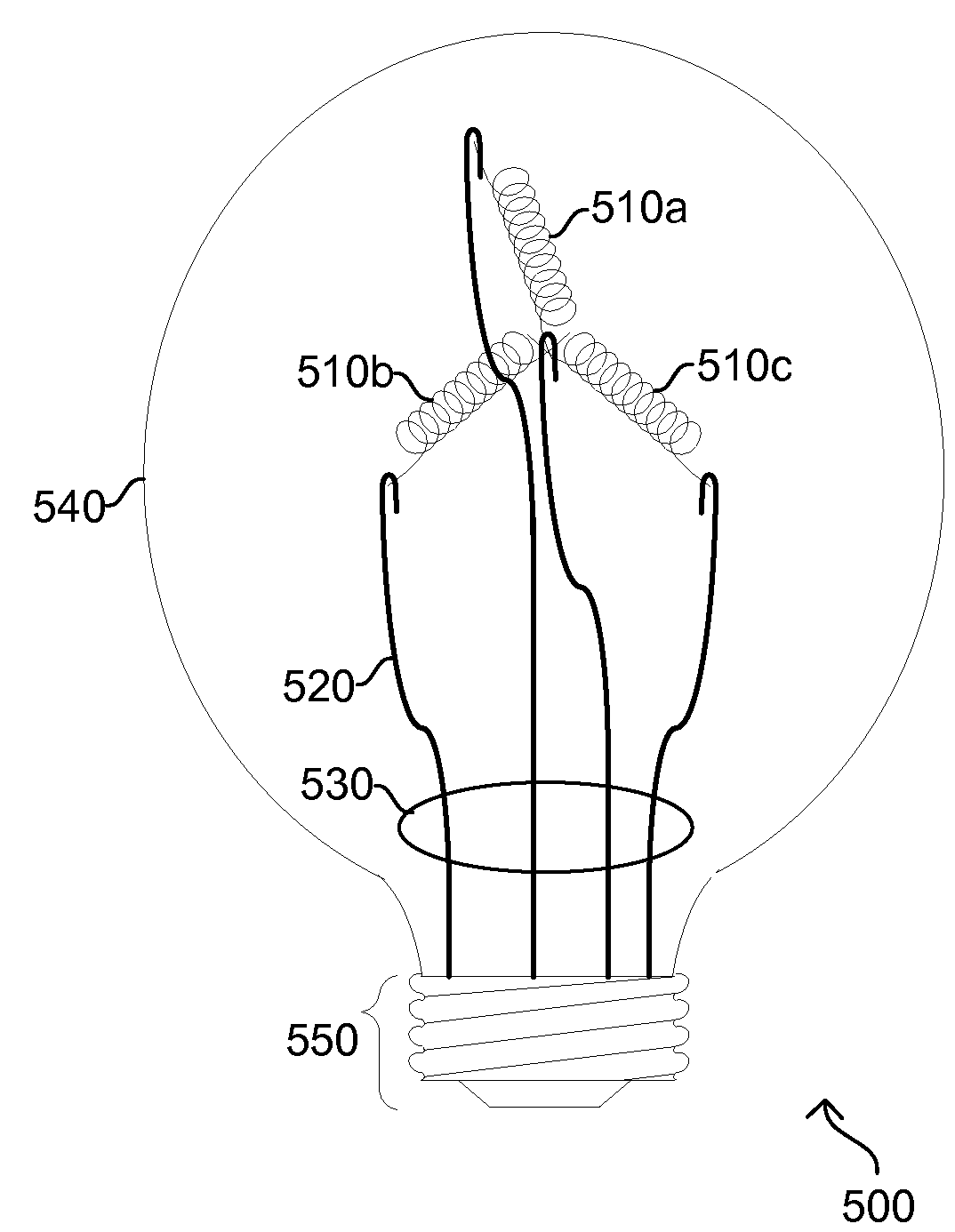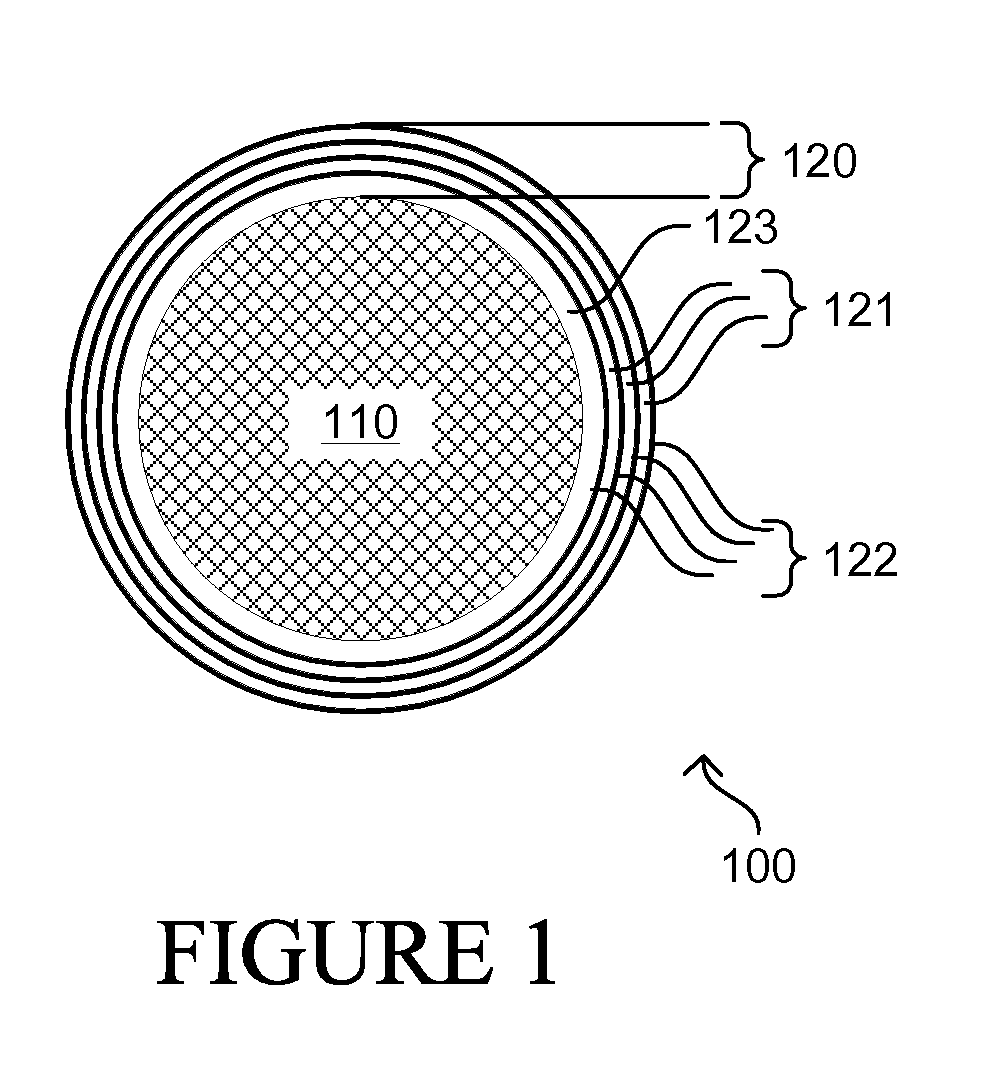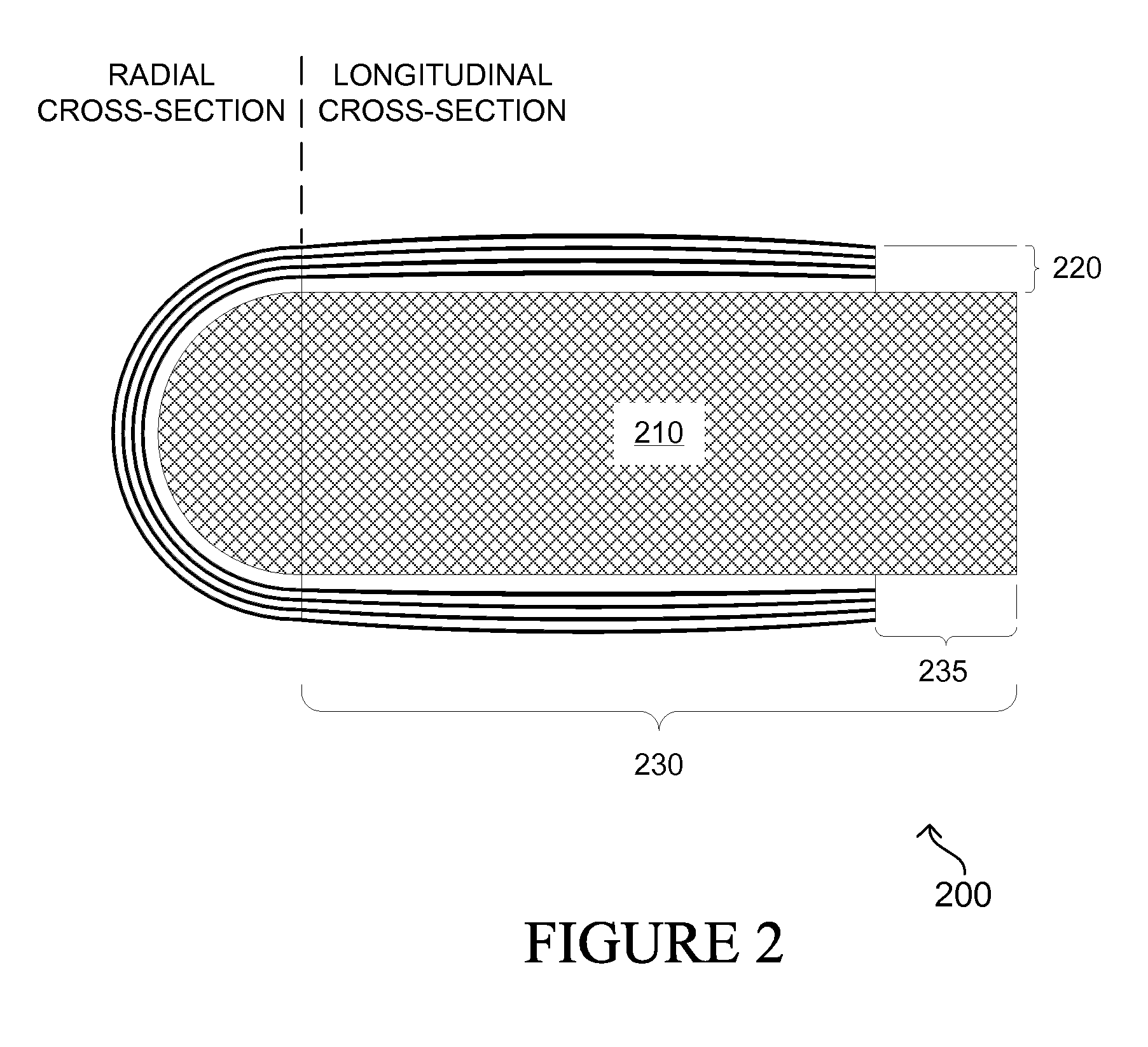Shaped Selective Thermal Emitter
a selective thermal and wavelength-selective technology, applied in the manufacture of electrode systems, instruments, optical radiation measurement, etc., can solve the problems of structure not being heated and operating in reflective mode, and achieve the effects of low cost reel-to-reel, high efficiency, and simple and cost-effective thin-film processing
- Summary
- Abstract
- Description
- Claims
- Application Information
AI Technical Summary
Benefits of technology
Problems solved by technology
Method used
Image
Examples
Embodiment Construction
[0025]Embodiments of the present invention and their advantages are best understood by referring to FIGS. 1 through 10 of the drawings, in which like numerals refer to like parts. The figures are not to scale, especially the apparent thickness of the thin films
[0026]FIG. 1 is a diagram illustrating a cross section of a filament 100 of a selective thermal emitter. Substrate 110 is a metallic wire or other filamentous substrate capable of resistively heating PBG 120 to emit light. Refractory metals are preferred for their melting point and low diffusion. Alternatively, a non-conductive material may be used for substrate 110 and PBG 120 itself is resistively heated. Use of a wire substrate has several key advantages, including low-cost reel to reel processing, integration of the directivity of a PBG light source, no light intensity non-uniformity or radiative losses from the backside of a planar structure, and compatibility with existing commodity manufacturing processes, bulbs, socket...
PUM
 Login to View More
Login to View More Abstract
Description
Claims
Application Information
 Login to View More
Login to View More - R&D
- Intellectual Property
- Life Sciences
- Materials
- Tech Scout
- Unparalleled Data Quality
- Higher Quality Content
- 60% Fewer Hallucinations
Browse by: Latest US Patents, China's latest patents, Technical Efficacy Thesaurus, Application Domain, Technology Topic, Popular Technical Reports.
© 2025 PatSnap. All rights reserved.Legal|Privacy policy|Modern Slavery Act Transparency Statement|Sitemap|About US| Contact US: help@patsnap.com



